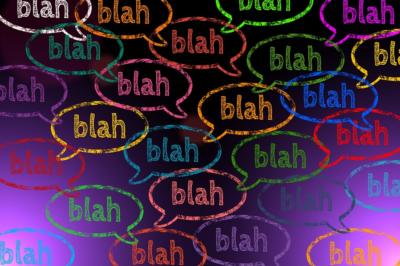- Homepage
- News
- Blogs & Articles
- The Risk of Poor Communication (plus free resources to help explain fire protection)

The Risk of Poor Communication (plus free resources to help explain fire protection)
Like it? Share it!
Following the awful disaster that struck at Grenfell Tower on June 15th, we should all be thinking of the key lessons that should be learnt in order to help reduce and hopefully prevent further potential fire damage to other people’s homes, businesses, and lives.
Although the general wider media seems to enjoy the drama of such an event, professionals in the industry must stay focused on the wider picture: providing expert guidance and solutions that will help create safer environments for everyone. One of the key issues that may cause some grief to both those giving advice, and those seeking it, is the issue of communication.
The fire industry is inundated with a specific type of language that is steeped in jargon, acronyms, and pedanticism over certain words (which to those outside the industry do not necessarily hold the same meaning, such as the difference between a ‘hazard’ and a ‘risk’). Add in the overburdening amount of information about all the different areas of fire protection – risk assessment, suppression, detection, and all other permutations across what seems like an eternally extending list of considerations to take into account – and it is no wonder that the average person outside of the industry is either confused, or totally unaware of their responsibilities due to the alienation that the language of our industry brings.

Whilst being very highly knowledgeable and skilled in the fire industry is useful, we all need to be able to share that knowledge and experience. We all know how confusing the fire industry can be (just check out our acronyms list below), so it is no wonder that those outside the industry struggle to understand us.
We need to be able to articulate what we know about fire to others – particularly to Responsible Persons, Duty Holders, and end users – in a simplistic way that is actually understandable.
Think about it. Are those with the most comprehensive encyclopaedic knowledge of legislation, standards, and practical application necessarily going to be the best at communicating that knowledge? They might be (being as knowledgeable as they are), but being an excellent speaker and writer is a totally different skillset – something that requires creativity, forethought, and an ability to empathise with the audience.
Communication skills are not quite as simple as being able to simply tell someone an idea or concept; they have to understand it. Being able to communicate is different to being able to communicate well – because being a good communicator relies on having a deep understanding of how communication itself works (a certain degree of understanding of psychology and a good command of English language and grammatical structure does assist with this).

Some jargon and legislation can be very confusing to those outside the industry
All too often fire professionals digress into technical jargon, that instead of solidifying the querying person’s knowledge, only gives them too much to work with. Language is such a complex thing and we should all be looking for ways to craft it more carefully towards the purpose. In the case of needing to educate others, the correct principle is just to keep it as simple as possible.
We can learn a lot from those that work in Education, whose primary focus has always been to ‘translate’, as it were, complex ideas, processes, and information into bitesize and understandable pieces. As any teacher or lecturer worth their salt will tell you – it can take a few attempts at explaining a concept for someone to actually understand it fully, and the process can be longer if it is explained poorly. There is also a vastly dramatic difference between someone listening and taking in new information and being able to act on that information.
When we apply this thinking to life within the fire industry, this can have some very serious and dangerous consequences. For Responsible Persons, Duty Holders, and end users, having only a partially formed understanding of issues within their own buildings pertaining to fire protection and prevention, could lead to serious errors and oversights – such as not updating the fire alarm log book, failure to understand that fire protection products need to be tested and serviced, or worse still – a less than astute attitude whereby practising fire drills or explaining fire safety policies to residents, visitors, or staff may be placed as ‘very low priority’.

To Do: fire safety
At the other end of this battlefield of fire industry jargon versus the wider public’s understanding lies a wide range of misinformation and misconceptions. This can sometimes occur when a fire industry professional doesn’t communicate or present a largely technical subject into plain and simple English, or perhaps does not break down the information in a way that is easy to digest. Doing so leaves audiences room for interpretation (or misinterpretation, as the case may be). Unfortunately, our minds are wired in such a way that if presented with heavily worded or complex concepts, there is a danger of dismissing the information – no matter how important. If it is too complex, humans are all too likely to either ignore the information, or simply find the facts too far out of reach (commonly referred to as ‘in one ear and out the other’).

Also known by psychologists as 'cognitive overload' - when someone is given so much information that they can't process it all.
Best to explain things slowly - and most importantly, one concept at a time.
When it comes to fire safety, ignoring or dismissing information can have lasting and damaging consequences. A fire alarm that goes routinely unchecked for a few weeks due to a lack of understanding that fire alarms, do, in fact, need to be tested and checked, may extend slowly into a few months or even years, until the equipment eventually fails and is left completely unchecked.
Whilst generally the information available to help Responsible Persons, Duty Holders, and end users, is helpful (depending on the source, of course), getting our message of fire prevention strategies across is as crucial as ever. We, as an industry, have a responsibility to dissect and disseminate information based upon our own knowledge, experience, and expertise, in a way that communicates clearly.
In order to help with this task, we’ve put together a toolkit of information produced by the FIA for you to use. These resources should help to explain a few key concepts in a manageable way to Responsible Persons, Duty Holders, and end users. Print them out, download them, share them, send the links on via email – whatever method works best. And remember, if there isn’t anything here that you feel you need, you can always search all of our publications in our Resource Library.
Toolkit:
Duty Holder? All you need to know about your responsibilities>>
Third Party Certification for Customers whitepaper>>
Fire detection and alarm infographic>>
This video that explains Third Party Certification clearly>>
TAGS
-

FIA Team
FIA Team
Related posts
-
Fireside Chat with Managing Director and Founder of RayFire Services Ltd, Ray Hope
25 March 2024
By Charlotte Brill, Content Marketing Executive
-
Ensuring fire safety in schools: responsibilities, developments, and training
06 October 2023
By Neil Budd, FIA Technical manager
-
On this day, forgotten disasters: Summerland disaster
02 August 2023
By Kirsty Lavell, Marketing Manager
Related news
-
New FIA Guidance on BS 5839-1 Fire Alarm Categories
23 December 2025
-
FIA Emergency Lighting Course Achieves Level 3 FireQual Status
22 December 2025
